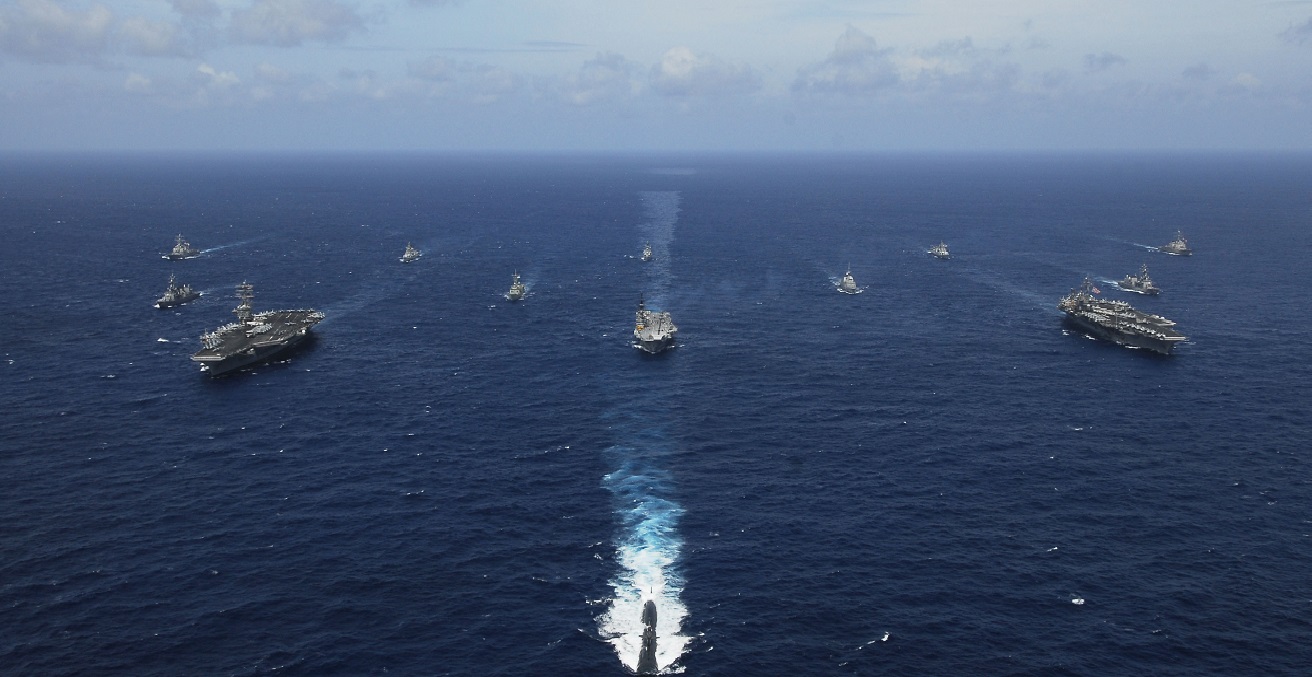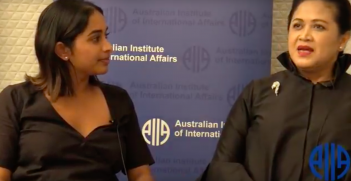An Indo-Pacific Charter: Back to the Basics of Regional Order

Discussions of an Indo-Pacific Charter in a post-COVID-19 world are starting to gain traction. To make this charter a reality would require implementing a minimalist and inclusive design that first seeks order and later paves the way to justice.
As the world moves into its seventh month of responding to COVID-19, onlookers are beginning to consider what will happen to the international order after the dust has settled. The pandemic has had the effect of both laying bare and exacerbating the geopolitical fractures within the Indo-Pacific. Ongoing territorial disputes, increases in military spending, and uncertainties about the hegemonic balance of the region threaten to ignite the flames of power politics as governments continue to reassess their security and material capability. Simultaneously, the web of Indo-Pacific regional architecture appears reticent in the face of expansionism and displays difficulties in responding to the concerns of member states. In the face of regional disunion, decision makers are unilaterally seeking to prepare for the worst or suffer the consequences – but does it have to be this way?
A solution that is gaining traction in academic and private spheres is the creation of an Indo-Pacific Charter, drafted by the United States, India, Japan, Australia (“the Quad”), and other likeminded countries. Like the Atlantic Charter of 1941, proponents suggest that its Indo-Pacific analogue would clarify the long-term goals of the members of the Quad and establish a shared regional rule book. Its primary objective would be to lay the foundations for a transparent and accountable vision of order and end the uncertainty that mires the region.
Exactly what should be contained in such a charter has been the subject of some debate. While some suggest that it should simply re-emphasise the relevance of the model of international order laid out in the Atlantic Charter, others offer more reformist proposals. One such offering suggests that a charter should establish a security mechanism that safeguards sea and air lanes from aggression and territorial expansion by forming a reciprocal military alliance among the members of the Quad. The establishment of an Indo-Pacific Security Council, international policies regarding the use of artificial intelligence, the formation of a Space Security Council, and the promotion of participatory democracy have also made the list of proposed inclusions.
However, if the goal of an Indo-Pacific Charter is to produce peace, cooperation, and safeguard sovereignty, care should be taken to avoid designing regional architecture that could be interpreted as openly hostile and exclusionary. There is a great risk that suggestions like those mentioned above will face both condemnation from Beijing and hesitation from states who are loathe to enter military alliances where they may be forced into conflicts by treaty obligations.
It is for this reason that an Indo-Pacific Charter must be a minimum framework that is not membership exclusive and not predicated on the idea of deterrence. Instead, it must set out to establish only the guiding principles necessary to enshrine the freedom and stability of the states of the Indo-Pacific. Membership must be available to China and other states outside of the Quad.
To achieve this, the Indo-Pacific Charter must first and foremost assert the primacy of sovereignty under the condition of systemic anarchy, while also acknowledging the possibility of prosperous coexistence. The approach to such a vision of regional interaction should not be one of realism or revolutionism, but of rationalism. In its inception, the charter should provide only the basic necessities required to produce stability and predictability among members, while minimising exclusion. Such an arrangement would leave the possibility for higher levels of integration open for the long term.
Broadly, these basic necessities should address the following goals: the establishment of clear limitations to the use of force; the recognition of sovereignty and upholding of property and territory rights; and assurances that states will champion the sanctity of agreement. The ramifications of violating these three necessities are clearly reflected in the issues facing the Indo-Pacific region in the 21st century. Ongoing uncertainty about North Korean nuclear intentions and capabilities, as well as Chinese military expansion, have led to reactionary military spending in India, Japan, and Australia. Ongoing territorial disputes provide the tinder needed for an errant spark to ignite widespread violence, as most recently seen in the Ladakh region. The absence of a single unified regional organisation that allows for accountable agreements to be produced between states perpetuates these problems.
Yet, despite the appearance of fragmentation across the region, a shared vision of the Indo-Pacific does exist and has been articulated clearly by many actors in the region over the last few years. As Professor Rory Medcalf recently stated in an interview about a possible Indo-Pacific Charter, values common across the region include a desire to protect the rights of smaller states, a rejection of the use of coercion in international affairs, and determination to enshrine and uphold the rule of international law. This is important to note because, as Hedley Bull pointed out in The Anarchical Society, states that are conscious of their shared values and interests will conceive themselves to be bound by certain rules in their relations, and for this reason, will actively engage in the upholding of shared primary institutions. Thus, the once isolated voices of the states of the region would be unified in an international society. An Indo-Pacific Charter would provide the rule book and roadmap needed to give rise to this. However, important questions remain about whether or not the timing is right for such a major step toward regional organisation in the Indo-Pacific.
Just as analysts and spectators today reflect on the United Nations and discuss the rationale for restructuring it along lines that better reflect the contemporary world, we now have the opportunity to bring the regional architecture of the Indo-Pacific in step with present geopolitical issues. In this post-pandemic space, decision makers will have the opportunity to enshrine a regional order that will seek to constrain the possibility of violence and rule by coercion. In the long-term, a successful minimalist establishment will pay dividends as the charter expands and stable order offers a path to justice capable of responding to long-term shared problems.
Iain D. Johnson is a teaching associate at Monash University after graduating from his BA with honours in 2018, and is an incoming research student at Waseda University’s Graduate School of Political Science as a MEXT scholar.
This article is published under a Creative Commons License and can be republished with attribution.





